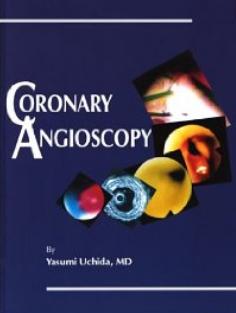An elderly man with past H/o CAD was admitted with ischemic LVF and hypotension .Blood pressure was 90/60 mmhg and pulse rate was 140 . Urine urine output in the immediate past hour was 50 ml . Saturation was 95 % .He had fairly extensive crackles in both lung fields.
A bed side echo showed moderate LV dysfunction , with wall motion defect in LCX territory and mild MR .A dignosis of post MI -ischemic LVF was made .
He was put on intensive anti failure protocol. I asked my fellow to administer IV NTG and left the ward .
On my next visit after few hours . . . the patient was in much bad shape , and when I enquired , I learnt NTG was never administered . I was curious to know why the fellow dis- obeyed my instruction .
He felt sorry . . . But he earnestly told me , he could not comprehend the principle of administering NTG in a patient with shock ! . I was happy to note his genuine concern for the patient ! But . . . I had to take a brief lecture to convince the importance of NTG in some forms of shock !
What is the cause for hypotension in ischemic LVF ?
Lungs are flooded due to very high LVEDP . Blood not only struggles to enter the LV but also finds difficult to leave the LV , former due to defective relaxation later due to poor pumping.
The extremely high pre-load actually stuns the left ventricle in diastole . (Primarily diastolic stunning ) . Here is a hemodynamic paradox . Excess pre-load occurs in terms of pressure , but in terms of volume there is miniscule amount blood that traverses LV .
This is pre-load mismatch at play .Empty ventricles with high wall stress and that is reflected in aortic afterword as well .
We have to some how reduce the very high levels of LVEDP . IV NTG can dramatically reduce the pre load ( and reduce the LVEDP .) The other major benefit is , NTG can reduce the MVO2 by improving sub endocardium coronary perfusion and de-stress the heart.
Once LVEDP is lowered , the ventricle will tend to recover and gain at least some original elasticity ( Frank starling forces) . Of course it will be defective due to ongoing ischemia . Even slight fall of LVEDP (say from 25 to 18 mmhg can have significant benefits as the LV function curve labors on the steep shoulder region !) .
This is one situation where NTG can increase the blood pressure once the hemodynamics is favorably altered.
*Yes . . . heavy doses of Frusemide injection can do the same job but it largely depends the kindey’s cooperation to flush out fluids .In a shock like situation one can trust the kidney perfusion !
Additional benefits of NTG
Mitral regurgitation is a serious destabilizer of LV function .NTG can reduce the regurgitant fraction in acute MR effectively .
Caution
NTG may worsen the hypotension of RV infarction . Make it very sure , you are not dealing with this unique pre-load dependent circulation.
What happened to this patient ?
He did show improvement with IV NTG . Of course it was not dramatic as I have projected in this article .Still it was really helped him .He required simultaneous dobutamine infusion as well .The BP did not fall further and lung congestion was relieved .He went on to recover fully by 48 hours and was posted for elective cath study .
Final message
We tend to worry more about falling blood pressure when administering NTG. . .It is a wonderfully effective drug especially in the setting of ischemia and cardiac failure even if the blood pressure is low !
Acute cardiac hemodynamics is complex phenomenon .No one has mastered it .Paradoxes are common . Hypotension in the back ground of acute pulmonary edema especially due to ischemic LVF can be corrected by NTG . Of course physicians need some courage to administer NTG in patients with a systolic pressure of 80-90mmhg.
This should ideally be done with intra arterial line in place and a simultaneous inotropic line (Doubtamine /Nor-epinephrine ) back up in case of worsening perfusion pressure .
Read Full Post »























